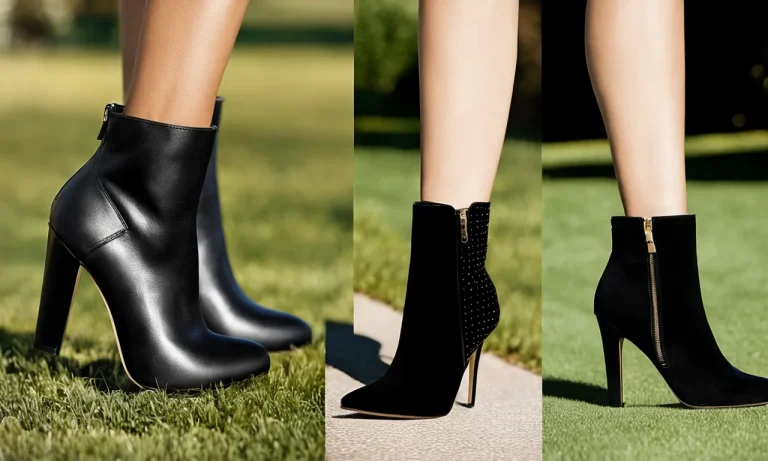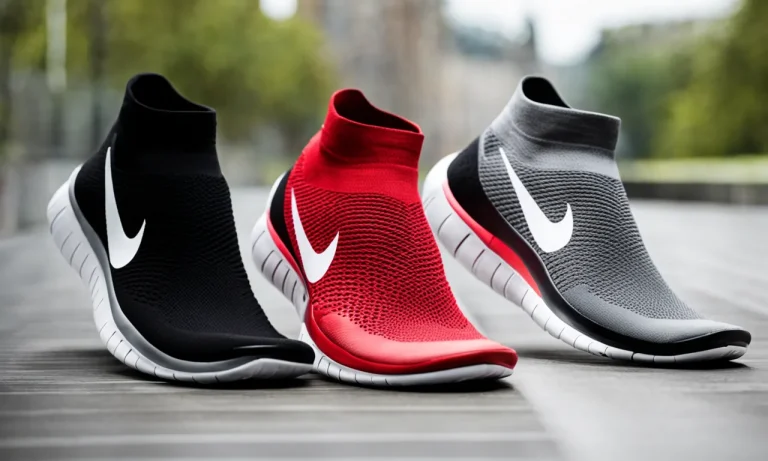If you’ve ever seen a horse up close, you may have noticed that their hooves are encased in metal horseshoes. But why do horses need shoes in the first place? In short, horseshoes protect the hoof wall from excessive wear and provide grip on different surfaces.
But there’s much more to discover about this age-old practice of horseshoeing.
In this comprehensive guide, we’ll cover everything you need to know about why horses wear shoes. We’ll explore the history and evolution of horseshoes, the anatomy of the hoof, the benefits of shoeing, the shoeing process, and the different types of horseshoes used today.
We’ll also look at some interesting facts and statistics about horseshoeing. So read on to learn all about this integral part of caring for domestic horses!
A Brief History of Horseshoeing
Horseshoeing, the practice of attaching metal shoes to a horse’s hooves, has a long and fascinating history. This article will delve into the origins of horseshoeing and explore the advancements made in horseshoe design and materials throughout the years.
The Origins of the First Horseshoes
The practice of shoeing horses dates back thousands of years. The earliest evidence of horseshoe-like objects can be traced back to ancient Asian civilizations, such as the Mongols and the Chinese. These early horseshoes were made from materials like rawhide, leather, and plant fibers.
They were designed to protect the horse’s hooves from excessive wear and tear caused by traveling on rough terrain.
In Europe, the Romans were known to use metal horseshoes as early as the 2nd century AD. These early horseshoes were forged from iron and were nailed directly into the horse’s hooves. They provided added traction and protection, allowing horses to travel more comfortably over various surfaces.
Advancements in Horseshoe Design and Materials
Over the centuries, advancements in horseshoe design and materials have greatly improved the effectiveness and durability of horseshoes. In the 15th century, farriers began shaping horseshoes to fit the natural curve of the horse’s hoof, providing a better fit and increased comfort for the animal.
In the 19th century, the widespread use of the railroad led to the development of machine-made horseshoes. These mass-produced horseshoes were made from steel, which offered superior strength and durability compared to iron.
This innovation allowed for more efficient and cost-effective horseshoeing practices.
Today, horseshoes are made from a variety of materials, including steel, aluminum, and synthetic materials. Different types of horseshoes are used for various purposes, such as racing, jumping, or general riding.
The type of shoe used depends on factors such as the horse’s breed, activity level, and the condition of its hooves.
It’s important to note that not all horses require shoeing. Horses that are kept in natural environments with soft terrain may not need shoes, as their hooves naturally wear down. However, for horses that are regularly ridden on hard surfaces or engaged in demanding activities, shoeing can provide added protection and support for their hooves.
Anatomy of the Hoof
Understanding the anatomy of a horse’s hoof is essential to comprehend why horses need to be shod. The hoof, a complex structure, is composed of both external and internal components.
External Structures
The external structures of a horse’s hoof include the hoof wall, sole, frog, and heel. The hoof wall, made of keratin, is the hard outer covering that protects the sensitive internal structures. It grows continuously, similar to our fingernails.
The sole, located in the center of the hoof, provides support and protection. The frog, a triangular-shaped pad located at the back of the hoof, acts as a shock absorber and aids in circulation. Lastly, the heel, located at the back of the hoof, bears a significant portion of the horse’s weight.
Internal Structures
Inside the hoof, there are several vital internal structures that play a role in the horse’s overall soundness. These include the coffin bone, laminae, and digital cushion. The coffin bone, also known as the third phalanx, is the primary weight-bearing structure within the hoof.
It is suspended within the hoof capsule by the laminae, which act as a suspension system and provide stability. The digital cushion, located between the frog and coffin bone, absorbs shock and aids in circulation.
It is crucial for horse owners and riders to have a basic understanding of the anatomy of the hoof. This knowledge helps in recognizing any abnormalities or issues that may arise and allows for proper care and maintenance of the horse’s hooves.
For more in-depth information on the anatomy of the hoof, visit www.thehorse.com, a reputable source for equine information and education.
Benefits of Horseshoeing
When it comes to the care and maintenance of horses, one important aspect is horseshoeing. Horseshoeing is the practice of attaching metal shoes to a horse’s hooves. While it may seem like an unusual practice, horseshoeing actually offers several benefits for the horse.
Let’s explore some of the key advantages of horseshoeing.
Protection for the Hoof
One of the primary reasons horses are shod is to provide protection for their hooves. Horses’ hooves can be vulnerable to wear and tear, especially when they are regularly used for activities such as riding or pulling heavy loads.
The metal shoes act as a barrier between the ground and the hoof, preventing excessive wear and reducing the risk of injury. This is particularly important on hard or uneven surfaces, where the hooves can be more susceptible to damage.
Traction and Grip
Another benefit of horseshoeing is improved traction and grip. The metal shoes have a rough surface that helps the horse maintain a solid grip on different terrains. This is especially important for horses used in activities like racing or eventing, where agility and stability are crucial.
The shoes can prevent slipping and provide better control, allowing the horse to perform at its best.
Therapeutic Shoes
Not all horses require standard horseshoes. Some horses may have specific hoof conditions or injuries that require therapeutic shoes. These specialized shoes are designed to address specific issues and provide additional support and relief.
For example, horses with laminitis, a painful condition affecting the hoof, may benefit from therapeutic shoes that alleviate pressure and promote healing. Consulting with a farrier who specializes in therapeutic shoeing can help address any specific hoof concerns your horse may have.
Conform to the Hoof Shape
Each horse has a unique hoof shape, and horseshoes can be customized to fit the individual horse’s feet. This ensures a proper fit and optimal support. The farrier will carefully trim and shape the horse’s hooves before attaching the shoes, ensuring that they conform to the natural shape of the hoof.
This personalized approach helps maintain the horse’s overall hoof health and comfort.
The Shoeing Process
Preparation of the Hoof
Before a horse can be shod, proper preparation of the hoof is essential. This involves trimming the hoof to remove any excess growth and shaping it to ensure proper weight distribution. Trimming also helps prevent cracks and other hoof-related issues.
The farrier, a specialist in equine hoof care, will carefully examine the hoof to determine if any corrective measures need to be taken before fitting the shoe.
Fitting the Shoe
Once the hoof is properly prepared, the next step in the shoeing process is fitting the shoe. The farrier will select a shoe that is the appropriate size and shape for the horse’s hoof. It’s important for the shoe to fit snugly without causing any discomfort or interference with the horse’s natural movement.
The shoe is then heated and shaped to match the contours of the hoof. This ensures a proper fit and helps provide support and protection to the hoof.
Nailing on the Shoe
After the shoe has been fitted, it is time to nail it onto the hoof. The farrier will carefully position the shoe and drive nails through the shoe and into the hoof wall. These nails are then clenched or bent over to secure the shoe in place.
It is crucial for the farrier to have the necessary skills and experience to do this step correctly, as improper nailing can lead to discomfort and potential injury to the horse.
Throughout the shoeing process, the farrier takes into consideration the horse’s conformation, gait, and any specific requirements or issues the horse may have. The goal of shoeing is to provide support, protection, and enhance the horse’s performance.
Regular shoeing is necessary to maintain the health and soundness of the horse’s hooves, as well as to prevent and address any potential hoof issues.
For more information on horse shoeing, you can visit www.americanfarriers.com.
Types of Horseshoes
When it comes to horseshoes, there are several different types available, each designed to serve a specific purpose. Here are three main categories of horseshoes that are commonly used:
Regular Shoes
Regular shoes are the most common type of horseshoes and are used for horses that have a normal hoof conformation. These shoes are typically made of steel or aluminum and are shaped to fit the horse’s hoof.
Regular shoes provide support and protection for the horse’s hooves, helping to prevent excessive wear and tear. They are available in a variety of sizes and styles to accommodate different breeds and disciplines.
Corrective Shoes
Corrective shoes are used when a horse has a specific hoof condition or lameness issue that requires additional support or correction. These shoes are often custom-made and can be used to address problems such as hoof imbalances, laminitis, or navicular disease.
Corrective shoes may have wedges, pads, or other modifications to help alleviate pain or correct the horse’s gait. It is important to work with a knowledgeable farrier or veterinarian to determine the best type of corrective shoe for your horse’s specific needs.
Specialty Shoes
Specialty shoes are designed for specific disciplines or activities. For example, there are shoes designed for horses that participate in jumping, dressage, or racing. These shoes may have additional traction or grip to improve performance or prevent slipping.
Some specialty shoes are also designed to absorb shock or reduce concussion, providing added protection for the horse’s legs and joints. It is important to consult with a professional who understands the requirements of your horse’s specific discipline to ensure the best choice of specialty shoe.
Remember, proper hoof care is essential for the overall health and well-being of your horse. Regular hoof maintenance, including trimming and shoeing, can help prevent lameness and other hoof-related issues.
Always consult with a professional farrier or veterinarian to determine the best type of shoe for your horse’s individual needs.
Interesting Facts and Statistics
When it comes to horses and their shoes, there are several interesting facts and statistics to consider. Let’s take a closer look:
The number of shod horses worldwide
According to a survey conducted by the American Horse Council, approximately 75% of horses in the United States are shod. This statistic gives us an idea of just how prevalent shoeing is in the equine industry.
The average cost of shoeing a horse
Shoeing a horse can be quite costly, with the average cost ranging from $60 to $150 per shoeing session. This cost can vary depending on factors such as location, type of shoe used, and any additional services required.
The frequency of shoeing
On average, horses need to be reshod every 4 to 8 weeks. This timeframe can vary depending on the horse’s activity level, hoof growth rate, and the type of work they are being used for. Regular shoeing is essential to maintain the health and performance of the horse.
The types of horseshoes used
There are various types of horseshoes available, each designed to meet specific needs. Some common types include steel shoes, aluminum shoes, and synthetic shoes. The choice of shoe depends on factors such as the horse’s discipline, hoof condition, and the terrain they will be working on.
The benefits of shoeing
Shoeing provides several benefits for horses. It helps protect their hooves from wear and tear, provides traction on different surfaces, and can improve the horse’s overall performance. Additionally, shoeing can help correct certain hoof abnormalities and provide support for horses with lameness issues.
The importance of a skilled farrier
Proper shoeing requires the expertise of a skilled farrier. A farrier is a professional who specializes in hoof care and shoeing. It is crucial to work with a knowledgeable and experienced farrier to ensure the horse’s hooves are properly maintained and shod to prevent any potential issues or injuries.
By understanding these facts and statistics, horse owners can make informed decisions about the shoeing needs of their horses. Regular shoeing, along with proper hoof care, is essential for the well-being and soundness of the horse.
Conclusion
Horseshoeing has come a long way from its first rudimentary forms centuries ago. While the practice has evolved over time, the primary goal remains the same – to protect hooves and provide additional traction for domestic horses.
Knowing the intricate anatomy of the hoof highlights why shoeing is so vital for their health and performance. There are many benefits to properly shoeing a horse, from enhancing movement to correcting issues. The actual process requires expertise and precision to avoid harming the hoof.
And today there are more horseshoe varieties than ever before to accommodate different needs. Horseshoeing remains an indispensable part of caring for horses. So the next time you see shoes on a horse’s hooves, you’ll understand the compelling reasons why they need to be there.






